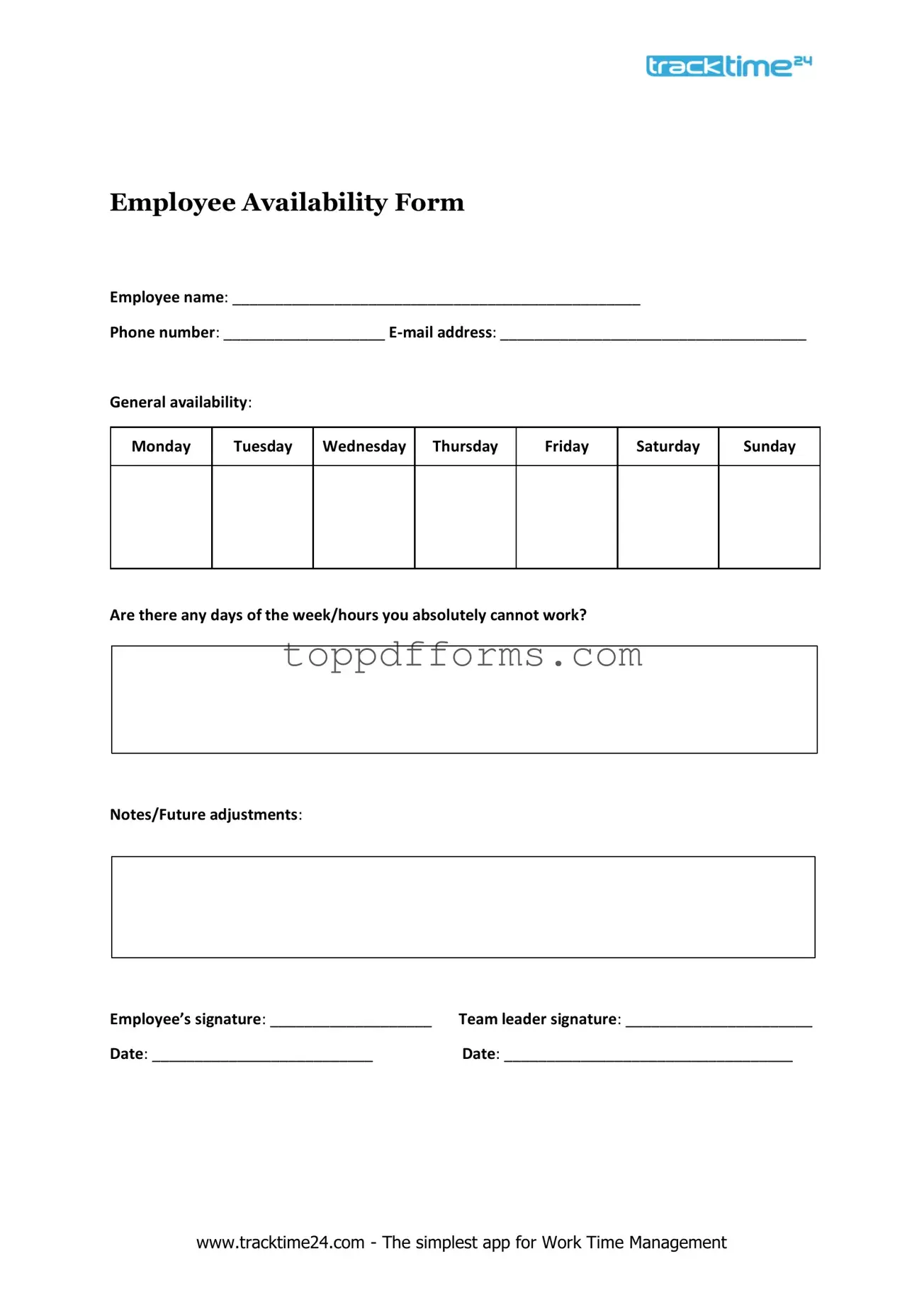What is the purpose of the Employee Availability form?
The Employee Availability form is designed to collect information from employees regarding their preferred working hours and days. This helps employers schedule shifts more effectively and ensures that staffing needs are met while accommodating employee preferences as much as possible.
Who needs to fill out the Employee Availability form?
All employees, whether full-time, part-time, or temporary, should complete the Employee Availability form. This information is essential for managers to understand when employees are available to work and to create schedules that align with both business needs and employee availability.
How often should the Employee Availability form be submitted?
Employees should submit the Employee Availability form whenever there is a change in their availability. This could include changes in personal circumstances, such as school schedules or family commitments. Regular updates help maintain accurate scheduling and ensure that managers are aware of any shifts in availability.
What information is required on the Employee Availability form?
The form typically requires employees to indicate their preferred working days and hours. Additionally, it may ask for any specific constraints, such as days when an employee cannot work. Providing detailed information helps managers create a schedule that accommodates as many employees as possible.
Is the information on the Employee Availability form confidential?
Yes, the information provided on the Employee Availability form is treated as confidential. Employers are responsible for safeguarding this data and ensuring it is only used for scheduling purposes. Employees can feel secure that their preferences will be respected and kept private.
What should I do if I forget to submit my Employee Availability form?
If an employee forgets to submit the form, they should do so as soon as possible. It is important to communicate any availability changes directly to the manager or supervisor. This proactive approach can help minimize scheduling conflicts and ensure that the employee’s preferences are considered.
Can I change my availability after submitting the form?
Yes, employees can change their availability after submitting the form. It is advisable to notify the manager or HR department as soon as possible to ensure that the new availability can be accommodated in the scheduling process. Open communication is key to effective scheduling.
